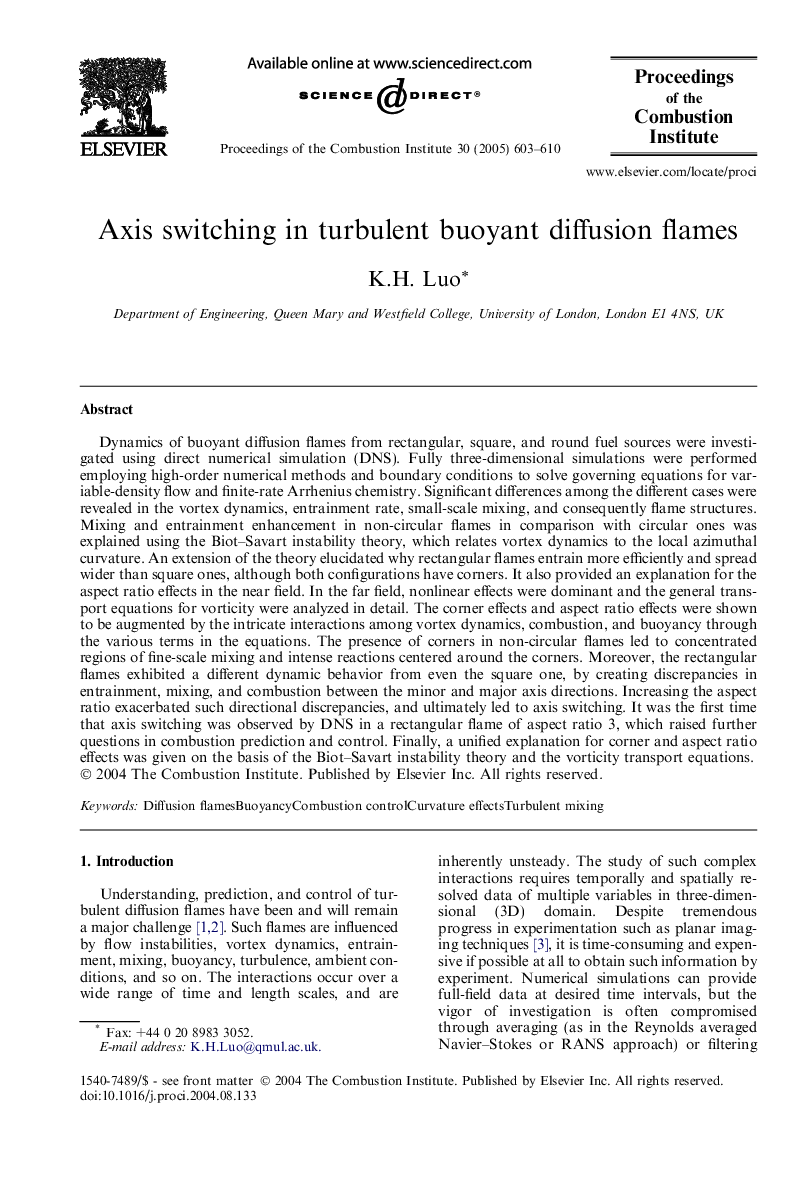| Article ID | Journal | Published Year | Pages | File Type |
|---|---|---|---|---|
| 9637382 | Proceedings of the Combustion Institute | 2005 | 8 Pages |
Abstract
Dynamics of buoyant diffusion flames from rectangular, square, and round fuel sources were investigated using direct numerical simulation (DNS). Fully three-dimensional simulations were performed employing high-order numerical methods and boundary conditions to solve governing equations for variable-density flow and finite-rate Arrhenius chemistry. Significant differences among the different cases were revealed in the vortex dynamics, entrainment rate, small-scale mixing, and consequently flame structures. Mixing and entrainment enhancement in non-circular flames in comparison with circular ones was explained using the Biot-Savart instability theory, which relates vortex dynamics to the local azimuthal curvature. An extension of the theory elucidated why rectangular flames entrain more efficiently and spread wider than square ones, although both configurations have corners. It also provided an explanation for the aspect ratio effects in the near field. In the far field, nonlinear effects were dominant and the general transport equations for vorticity were analyzed in detail. The corner effects and aspect ratio effects were shown to be augmented by the intricate interactions among vortex dynamics, combustion, and buoyancy through the various terms in the equations. The presence of corners in non-circular flames led to concentrated regions of fine-scale mixing and intense reactions centered around the corners. Moreover, the rectangular flames exhibited a different dynamic behavior from even the square one, by creating discrepancies in entrainment, mixing, and combustion between the minor and major axis directions. Increasing the aspect ratio exacerbated such directional discrepancies, and ultimately led to axis switching. It was the first time that axis switching was observed by DNS in a rectangular flame of aspect ratio 3, which raised further questions in combustion prediction and control. Finally, a unified explanation for corner and aspect ratio effects was given on the basis of the Biot-Savart instability theory and the vorticity transport equations.
Related Topics
Physical Sciences and Engineering
Chemical Engineering
Chemical Engineering (General)
Authors
K.H. Luo,
